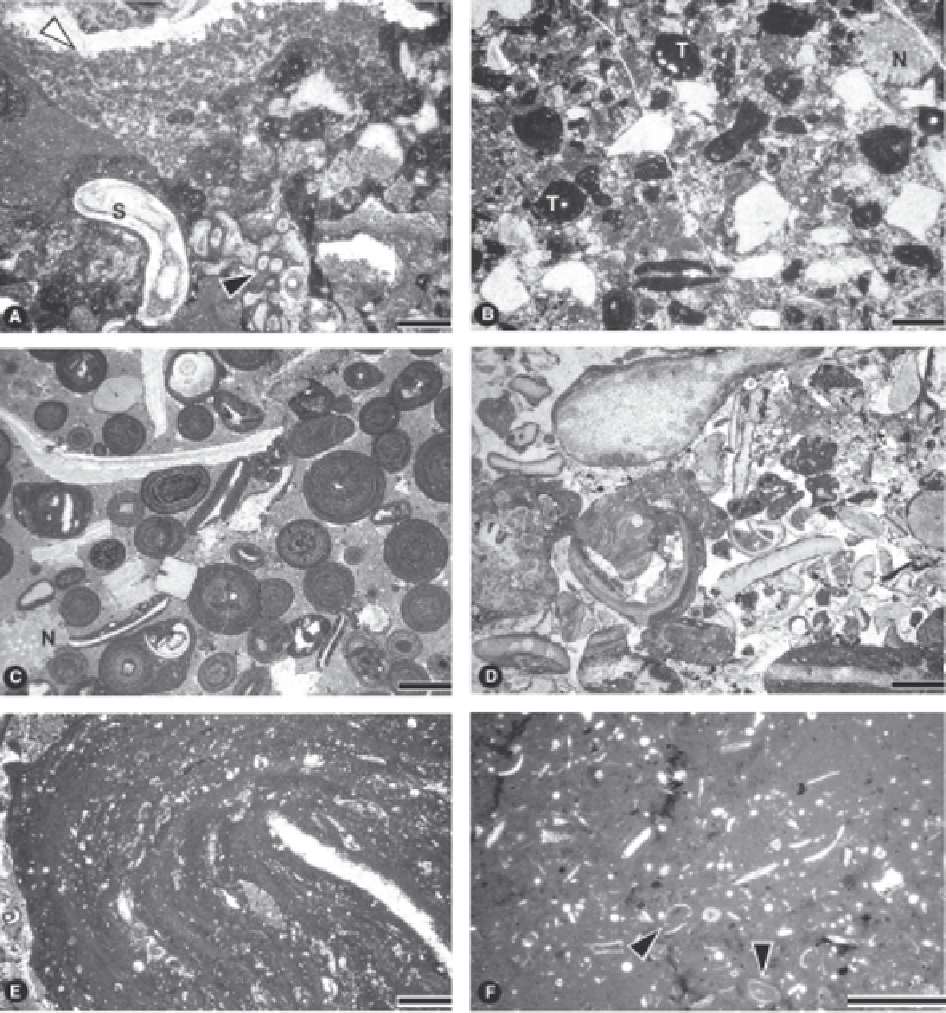Geology Reference
In-Depth Information
Fig. 15.25.
Microfacies of Jurassic slope carbonates.
The samples come from the Jurassic Qal'ch Limestone Formation:
east of Koron, Shotori Mountains (Tabas area; central Iran). The unit is Middle Callovian to Late Oxfordian in age. The unit
includes slope-to-basin sediments adjacent to the Esfandiar platform, consisting of an extended platform interior and a small
high-energy platform margin. The slope varies laterally from a low-angle depositional slope to a steeper bypass slope.
Common
autochthonous microfacies types
are microbe-sponge carbonates with strong biogenic encrustations (-> A) formed
on the upper and middle slope; packstones with encrusting
Tubiphytes
(-> B) occurring in close association with the micro-
bialites; and oncolitic carbonates formed in protected areas on the upper slope (-> E).
Allochthonous
grains shed from the
platform margin are ooids (-> C) and bioclasts (-> D). This material occurs in calciturbidites and debris flows intercalated in
slope and basin deposits. The
autochthonous background sedimentation
is represented by spiculitic wackestones (-> F).
A:
Microbialite with serpulids (S). The black arrow points to smaller calcareous worm tubes (
Terebella
), the white arrow
to an internal growth cavity filled with peloidal sediment.
B:
Skeletal packstone with
Tubiphytes
(T), crinoid fragments
(white) and bryozoans (N:
Neuropora
).
Neuropora
is a common bryozoan in many Late Jurassic platform carbonates.
C:
Ooid
packstone with aggregate grains (bottom), crinoid fragments and encrusted and coated shells. Calciturbidite. Highstand
shedding.
D:
Poorly sorted, lithoclastic bio-rudstone. Calciturbidite. Mid-slope lowstand wedge.
E:
Oncoid within an oncolithic
floatstone. Note the abundant bioclastic debris and foraminifera incorporated in microbial laminae
. F:
Fine-bioclastic wacke-
stone with sponge spicules and some ostracods (arrows). Scale is 1 mm. All pictures from Fürsich et al. (2003).

